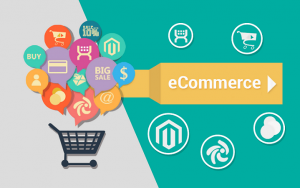 The world is witnessing how players like Amazon and Alibaba are dominating e-commerce and setting new rules for the game every year. At times, smaller, regional players have no other option but to follow new rules. However, setting the necessary foundation in place can enable every e-commerce player to boost business growth in 2020. Here are ten trends that should be considered while planning an e-commerce strategy.
The world is witnessing how players like Amazon and Alibaba are dominating e-commerce and setting new rules for the game every year. At times, smaller, regional players have no other option but to follow new rules. However, setting the necessary foundation in place can enable every e-commerce player to boost business growth in 2020. Here are ten trends that should be considered while planning an e-commerce strategy.
1. Online Shopping Trends Statistics
The eCommerce industry is perhaps one of the very few sectors that are showing super growth rates. Around 1.92 billion buyers shopped online in 2019, and 14.1% of the purchases were made via eCommerce sites. By 2023, this percentage is set to reach 22%. Studies have also pointed out that around 72% of online shoppers happen to be women. This year (2020), the industry is expected to reach a valuation of more than $4 trillion.
2. Use of Artificial Intelligence
The credit for introducing Artificial Intelligence, Machine Learning, image-based product search goes to Amazon. The firm has revolutionized online shopping and forced other vital players to incorporate similar measures to keep up in the chase.
Artificial Intelligence technology has managed to spread across various sectors. There are several AI-powered tools/widgets that help e-commerce portals in monitoring customer behavior, offering product recommendations, sales forecasts, inventory management, etc.
Most importantly, personalization and automated communication tools like Chatbots, and handling visual as well as voice search are crucial functions supported by AI technology.
3. Spike In Voice Search
Thanks to the continually rising popularity of digital assistants like Amazon’s Alexa, Microsoft’s Cortana, Apple’s Siri, the mode of interaction is gradually and surely shifting to voice from typing. A considerable percentage of searches are already being performed using voice search option.
Due to these numbers, companies are actively seeking better performance by ensuring their website supports voice searches by implementing voice optimization strategies. Experts use long-tail keywords, implement local business schema markup, work towards improving local searching rankings, and decrease website loading times to ensure better rankings in voice search results.
4. Personalization To Create Individualized Experiences
Technologies like Machine Learning and Artificial Intelligence help digital commerce companies to offer personalized product recommendations, bestseller lists, offers, and discount coupons.
Personalization helps online sellers to improve conversion, increase the level of engagement by creating unique experiences, decrease transaction time, and send the right marketing message across to the consumer.
The tools and widgets that can capture and analyze consumer data can prove to be extremely beneficial. Experts at Smart Sight Innovations can help you in implementing the best suitable platform-specific eCommerce widgets.
5. Augmented Reality Is Changing The Way People Shop
One of the most critical and common challenges faced by retail players is convincing the consumers that the products they buy would fit into their lives, houses. Pictures and informative videos often fail to generate confidence in the customer’s mind.
AR- Augmented Reality is helping online as well as offline sellers by offering a virtual product preview. The best example is the AR system that IKEA has set in place. The home furnishings and furniture seller operates online as well as offline stores in several countries. Customers can download the IKEA app and click pictures of the parts of the house where they wish to place the furniture. Then, visit an IKEA store, select the piece of furniture that they want to buy, and get a 3D picture for the furniture to check how it would fit and appear in the available space.
AR enables buyers to choose the best products that compliment the existing home furniture. There are several other noteworthy AR systems, including those from beauty products seller CoverGirl, and Shopify.
6. Payment Methods
The checkout process in e-commerce websites needs to be as user-friendly as possible. Fortunately, several payment gateway options support multiple payment methods.
Cash on delivery, mobile wallets, PayPal, credit cards, debit cards, and internet banking are the most popular options around the world. Research suggests, online shoppers prefer using digital wallets rather than sharing card details while buying online.
Several studies have pointed out that offering all possible payment methods may help in keeping the cart abandon rate lower, and this ultimately results in better conversion.
7. Customers Respond Better To Video Content
Social media video marketing statistics show how product videos, influencer marketing videos, video ads, and video blogs are helping brands connect with buyers.
Several digital agencies are shifting to YouTube, Facebook and Instagram videos. Creating superb video content for these platforms is helping in engaging prospects and generating sales. As highlighted in several reports, around 80 % of internet traffic around the world comes from videos. Online sellers who fail to add videos in their marketing strategy may not even survive down the line.
8. Buyers Appreciate Greener Products
A detailed study conducted by the New York University Center for Sustainable Business (CSB) recently highlighted some interesting findings. Consumers not only prefer buying sustainable goods but also collect receipts for such products.
From low emission vehicles, efficient lighting, to simple rechargeable batteries, customers often show the willingness to even pay more for greener products. Surveys suggest the preference for environment-friendly products is continually increasing. Thus, several e-commerce sites are positioning and aligning their products to meet this growing demand.
9. Mobile-Commerce Is On The Rise
Access to super-fast internet and mobile devices has changed customers shopping habits. mCommerce numbers are impressive. The US-based CBRE Consultancy’s study has pointed out that by 2021; roughly 54% of the online retail sales would be processed using mobile devices, as a result of which, several companies are investing in mobile platforms.
Even smaller regional players are deploying react native apps to cater to iOS and Android device users. Plus, there are other affordable options like Magento Mobile Apps and Shopify mobile commerce solutions. Players who fail to maintain a presence on the mCommerce platform are at risk of losing a big opportunity.
10. Rising Role of Social Media
It’s common knowledge that Facebook can influence sales. However, with 500 million monthly active users, Instagram is proving to be the new rising star and brands are already in a position to get the best out of the image-sharing app. According to experts, as much as 68 % of Instagram users engage with brands regularly. Thanks to micro-influencers, even startups with a limited marketing budget can attract and engage prospects on Instagram. The platform’s rising influence on users’ buying decisions is something that even big e-commerce players like Amazon cannot ignore. So, don’t be amused if you come across Amazon, e-Bay or other online seller’s ads on Instagram.
If you are looking for a firm that can develop custom eCommerce solutions to get the best out of the above mentioned trends, you should discuss your project with experts at Smart Sight Innovations.













